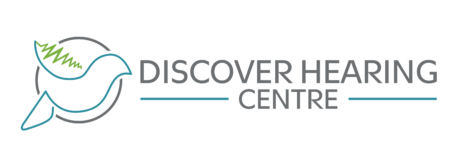Understanding Audiograms and Hearing Test Results

Hearing health is an often overlooked part of your overall well-being that most will only start thinking about when issues arise. Regular hearing tests can help detect potential problems early so the issue can be addressed quickly and the potential hearing loss can be managed more efficiently. One of the most critical tools in assessing hearing health is the audiogram, a visual representation of your hearing ability across various frequencies and sound levels.
Two of the most important factors in this are understanding audiograms and hearing test results so you can make an informed decision about your hearing care. In this blog, we’ll guide you through the components of an audiogram, how to interpret hearing test results, and the steps to take after receiving your diagnosis.
What is an Audiogram?
An audiogram is a chart that shows your hearing sensitivity across a range of sound frequencies and intensities in graph form. It’s an essential part of audiometric testing and helps to diagnose the degree and type of hearing loss you may be experiencing. Hearing specialists use audiograms to evaluate your hearing thresholds, meaning the softest sounds you can hear at different frequencies.
Your hearing specialist will be able to determine the extent of your hearing loss through the visual representation of the audiogram and recommend the appropriate actions going forward. In short, an audiogram is a crucial part of any hearing evaluation, giving a clear, visual summary of your hearing abilities.
Components of an Audiogram
To fully comprehend an audiogram, it’s essential to understand its two main components: the X-axis (frequency) and the Y-axis (hearing threshold).
X-axis: Frequency (Hz)
The X-axis of an audiogram represents the frequency measured in Hertz (Hz). Frequency refers to the pitch of a sound, ranging from low (bass) to high (treble). In hearing tests, the most common frequency range evaluated is between 250 Hz and 8,000 Hz, which covers the range of human speech. Testing at different frequencies helps determine how well you can hear various pitches, which is crucial for understanding how hearing loss may impact communication.
Y-axis: Hearing Threshold (dB)
The Y-axis of an audiogram shows the hearing threshold, measured in decibels (dB). The decibel scale indicates the volume of sound required for you to hear a tone at a specific frequency. The lower the dB level, the softer the sound. Audiograms typically chart hearing thresholds from 0 dB (normal hearing) to 120 dB (profound hearing loss). Different decibel levels indicate varying degrees of hearing sensitivity, with higher thresholds meaning more significant hearing loss.
Understanding Hearing Test Results
There are several types of hearing tests that can contribute to the data shown on an audiogram. The most common tests are:
- Pure-Tone Audiometry: This test involves listening to tones at various frequencies and volumes, with the results plotted on the audiogram to indicate hearing thresholds across the frequency range.
- Speech Audiometry: This test assesses the ability to hear and understand speech at different volumes, showing how hearing loss affects communication.
- Tympanometry: While not directly plotted on the audiogram, tympanometry tests the function of the middle ear and can help diagnose issues like ear infections or fluid buildup.
The results of these tests are marked on the audiogram using symbols, typically ‘O’ for the right ear and ‘X’ for the left ear in pure-tone audiometry. Hearing specialists then interpret these markings to determine the type and extent of hearing loss.
Interpreting Different Audiogram Patterns
Audiograms can reveal various patterns indicating different types of hearing loss:
- Normal Hearing Range: Hearing thresholds between 0 and 25 dB are considered within the normal range.
- Mild Hearing Loss: Hearing thresholds between 26 and 40 dB suggest mild hearing loss, which may impact the ability to hear soft sounds or understand speech in noisy environments.
- Moderate Hearing Loss: Thresholds between 41 and 55 dB indicate moderate hearing loss, which can make conversations challenging, especially in group settings.
- Severe Hearing Loss: Hearing thresholds between 56 and 70 dB fall into the severe range, often requiring hearing aids for effective communication.
- Profound Hearing Loss: Thresholds above 71 dB indicate profound hearing loss, where even loud sounds may not be audible without amplification.
Common Audiogram Patterns:
- Conductive Hearing Loss: This pattern occurs when sound waves are not efficiently conducted through the outer and middle ear. The audiogram shows a gap between air conduction and bone conduction thresholds, indicating a potential issue in the ear canal, eardrum, or middle ear bones.
- Sensorineural Hearing Loss: This type of hearing loss is caused by damage to the inner ear or auditory nerve. The audiogram shows no gap between air and bone conduction thresholds, with both showing reduced hearing sensitivity.
- Mixed Hearing Loss: This pattern shows a gap between air and bone conduction thresholds, with both thresholds indicating hearing loss. It is a combination of conductive and sensorineural hearing loss.
What to Do After Receiving Your Hearing Test Results
Your next steps after receiving your hearing test results depend on the audiogram. Your hearing specialist may recommend one or several of the following:
- Consulting With a Hearing Specialist: A professional consultation is essential to fully understand your hearing test results. Your hearing specialist will explain the implications of your audiogram and discuss potential treatment options.
- Treatment Options and Hearing Aids: If the audiogram indicates hearing loss, your hearing specialist may recommend hearing aids or other assistive devices to improve your hearing ability. Advanced hearing aids can be tailored to your specific audiogram, ensuring the best possible outcome.
- Lifestyle Adjustments and Hearing Protection: In addition to devices, your hearing specialist may also suggest lifestyle changes to protect your hearing. These could include reducing exposure to loud noises or using ear protection in noisy environments. Regular hearing tests are a crucial tool for monitoring your hearing health over time.
Don’t Hesitate to Book a Hearing Test
Understanding your audiogram and hearing test results is crucial in managing your hearing health. Regular hearing tests and professional advice can help you maintain optimal hearing and quality of life. If you have any concerns about your hearing, contact a hearing specialist as soon as possible and take proactive steps to protect and improve your hearing health. Schedule a hearing test in Kitchener today!
We offer comprehensive audiology services, from hearing tests and education to digital hearing aids and personalized hearing loss treatments that put you and your specific hearing health needs at the centre. Whether you need a hearing test, are looking for invisible hearing aids or require help with hearing aid fittings and programming, Discover Hearing Centre is here for you.
Discover Hearing Centre is a local clinic specializing in the treatment of hearing loss; we’ve worked with hundreds of patients to help them maintain independence. Whether you’re experiencing hearing loss or tinnitus, we’re dedicated to improving your quality of life through better hearing. When you choose us, you choose a team committed to your well-being.
Call us today at 519-208-4327 or fill out our convenient online form to learn more about how we can help you with hearing loss issues.
You Might Also Like
Top 4 Major Causes of Hearing Loss
What Is Tinnitus? Causes, Symptoms, and Treatment Options
Does Tinnitus Get Worse With Age?
Have Questions?
Call our office if you have any questions about your hearing loss or anything else related to hearing. We are happy to help and answer any questions you may have.





